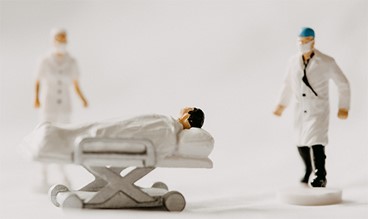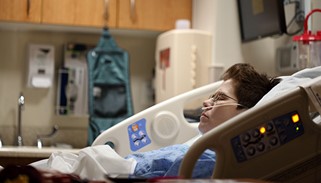Pressure injuries are extremely common in long-term bedridden patients and are one of the conditions that cause the greatest economic losses in clinical practice.

Currently, multifunctional nursing beds are capable of mechanically repositioning patients by inclining the bed surface. However, this process is still heavily reliant on manual assistance and fails to consider the movement of the center of rotation of the patient's body. Because the center of rotation is inconsistent, the patient risks pulling their back during repositioning. There are also limiations in coordination between humans and machine movement as well as shortcomings in functional flexibility.

To improve the coordination of human-machine movement of these assistance devices, associate professor Su Peng from the School of Mechanical and Electrical Engineering of the Beijing Information Science and Technology University led a team that conducted research on the movement of the shoulders and hips during the repositioning process.

The experimental bed for the repositioning motion is shown in the figure above. The bed surface is made from transparent acrylic plates, and 6 NOKOV optical motion capture cameras were arranged above and below the experimental bed.
While the body is laid flat on the back, the lower optical motion capture cameras track the reflective markers on the back through the transparent acrlyic plate. As the repositioning occurs, the upper optical motion capture cameras track all the markers as the body transitions into the new position. The movement of the markers is used to represent the skeletal movement of the shoulders and hips. This skeletal movement is the most important aspect to study when investigating patient repositioning from a supine position. After preliminary research, it was discovered that a dynamic model may be accurately determined by attaching just five reflective markers on the shoulders and hips.

A total of 15 subjects were included in the supine repositioning experiment, with each subject undergoing 20 trials of the experiment. The data from the trials were collected and averaged, then compared between subjects. The main area of analysis were the general motion trajectories of the subject's hips and shoulders throughout the experiment.

A simulated experiment of the movement model was then inputted into Matlab and the resulting fitting graph was analyzed. The experimental results show a consistent trajectory of the hips and shoulders between subjects.

In this study, the NOKOV motion capture system captured the repositioning of the human body from the supine position. The experimental and simulation results were compared to evaluate the accuracy of the movement model and the fit of the trajectory graph. This data can assist in the development of a repositioning aid designed to better coordinate human-machine movement.
Bibliography: